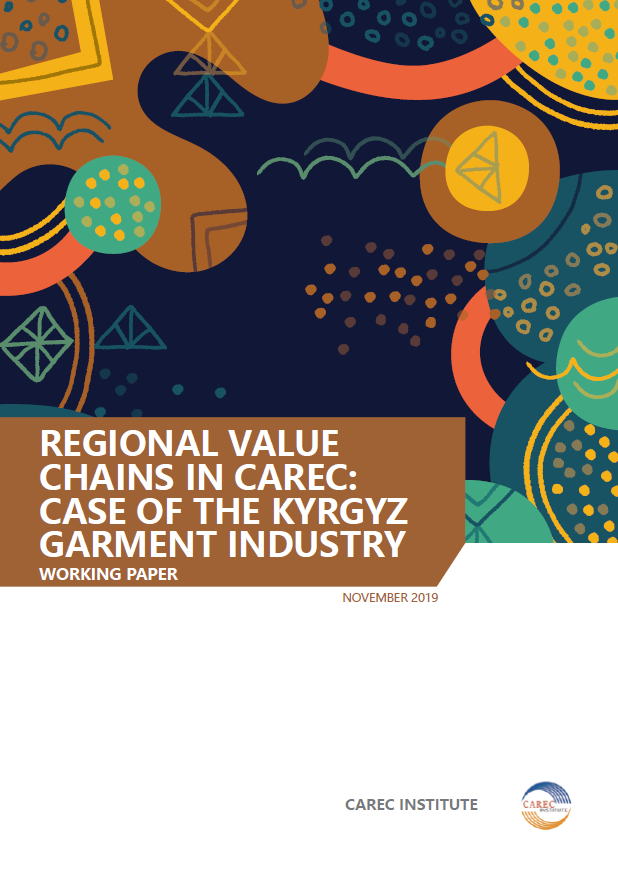Regional Value Chains in CAREC: The Case of Kyrgyzstan Garment Industry
The working paper titled “Regional Value Chains in CAREC: The Case of Kyrgyzstan Garment Industry” explores the role of Regional Value Chains (RVC) in promoting regional integration which is understood as a strategy that promotes the benefits of collective and collaborative activities among member countries through economies of scale, more vigorous intra-regional trade, expansion of markets, shared information platforms for exchange, and harmonized frameworks for social and economic interaction.
This study also looks into the Kyrgyzstan garment industry as an example of a relatively successful regional value chain with the potential to upgrade and engage in the global value chain for garments.
The RVCs are significant in the light of the unique context of the CAREC region. Despite its historical significance as the site of the ancient trade route – the Silk Road – the CAREC region has not been able to form a part of global production hubs and value chains. Evidence suggests that CAREC members would benefit to exploit the potential within the Asia-wide region to integrate into global value chains.
Recommendations for the Kyrgyz garment enterprises include considering expanding their activities beyond cut-make-trim (CMT) contracts and advancing into branding and marketing activities to add value. Policy support is needed in the following areas: i) better access for firms to sources of credit and finance; ii) capacity building in technology transfer/upgrading, market expansion, branding and distribution, and linkage to business associations; and iii) cross-border facilitation measures that will harmonize procedures to facilitate intra-regional trade and expansion of RVCs.
